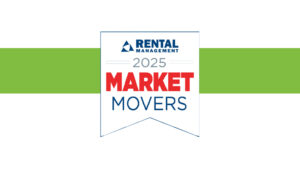I bet you didn’t come to me (or the Point of Rental site) for physics talk or to discuss kids’ rooms. Hang on, though – it’ll pay off.
You may be familiar with the concept of entropy – the idea that if a system loses too much energy, it will devolve into chaos. The example most commonly used is a dropped sock. It takes little energy to pick up the sock, but by ignoring the sock, it saps your energy, you end up with my niece’s room:

If you’ve worked in rental – if you’ve ever had that one machine that is always in the shop or the employee who you’re not sure you can rely on to show up for a setup job, you’re also familiar with how one small “sock” can gnaw at you and cause bigger problems. A machine that “works fine; you just have to start it this specific way” is a pretty good example of this – you can rent it out without fixing it, but if you do that with one item, then it can turn into a few items that operate like that. Over time, you devalue your brand, and it’s so gradual that you don’t remember how you got on that path.
Enter negentropy.
First, the bad news about negentropy: Unlike entropy, it requires effort.
The good news, though, is that like entropy, negentropy is self-feeding. As you discover ways to reduce entropy, your new, efficient practices will help you be more productive even as you discover new parts of your business (or your life) to optimize.
Here are four questions to ask yourself on your path to eliminating the energy-sucking entropy from your workday:
- Where are we wasting energy?
Do you have meetings that could be emails? Do you have a staff member who is a great worker but doesn’t work well with others for some reason? Is a process broken, requiring workarounds? Figure out the everyday (or occasional-but-more-impactful) occurrences that are sapping your energy and keeping you and your team from completely enjoying your job. - What do we need to tackle first?
Is there anything that’s absolutely driving you crazy? Fixing that problem first might make it easier to focus on other issues facing your business. Take care of the most pressing problems first. - How do we tackle it?
Once you’ve identified the problem, it’s a good idea to figure out how you can solve it. If it’s not worth solving, then you probably need to go back to question 2. But if you have bigger problems you need to solve, break it down into manageable steps and start tackling. - Did we get it done? What else can we do?
As you get through successfully tackling each of your problems, it may turn out that you’ve been battling symptoms of an issue rather than tackling the underlying problem. The good news is that all that work laid the foundation for you to know how you want to approach that underlying problem so you can start getting excited to go to work every day instead of dreading it.
By getting rid of entropy and actively pursuing efficiency, you’ll feel a lot better about coming to work tomorrow morning.



